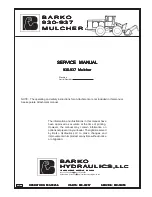
PCT Auto-Test Box User Manual
8
4. Testing and wiring
General
When connecting the CT to the PCT auto-test box, please follow the wiring hints given in the
PCT user manual.
Always connect only one CT to the PCT auto-test box. Disconnect and remove the unused
cabling from the PCT auto-test box and the CT after testing.
Using the PCT auto-test box, CT testing, burden measurement and primary winding
resistance measurement can be performed separately (i.e., using separate test procedures)
or together in one test sequence. Figure 2 shows the basic wiring required for CT testing. To
measure the burden and the primary winding resistance together with the CT test.
The advantage of using the PCT auto-test box for single-ratio CT testing is the option to
include burden and/or primary winding resistance measurement to the test without any need
for wiring changes during the test procedure. If you do not want to perform burden or primary
winding resistance measurement, you should preferably use the normal single-ratio CT test
mode of the PCT200i or PCT200Ai without using the PCT auto-test box.
Warning: When measuring the ratio of transformers make sure that the test voltage is
connected to the corresponding secondary winding, and the primary winding is connected to
the according measurement input. Accidentally mixing up the windings can cause life-
threatening voltages within the transformer and/or destroy the connected CT, the PCT auto-
test box or the PCT200.
Warning: Feeding test voltage to a tap of a multi-ratio CT can cause life-threatening voltages
on other taps with higher ratios. Always connect all secondary taps to the PCT auto-test box
in order to guarantee safety during testing.





























